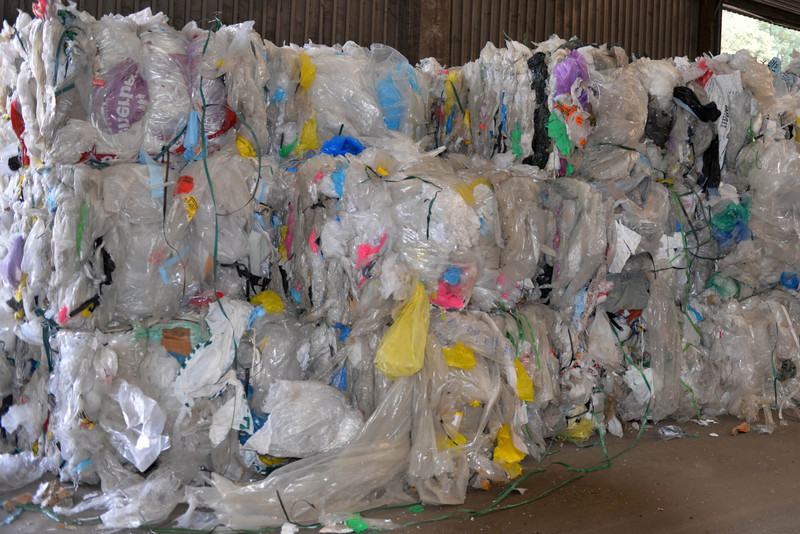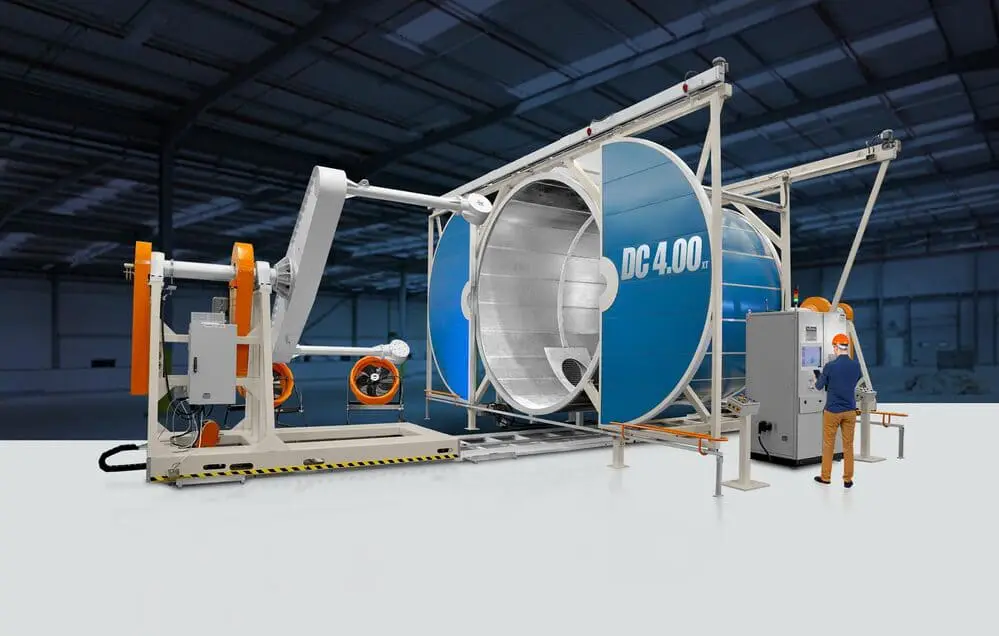Quick Overview
Are you familiar with the backbone of electrical systems? It all starts with the cable insulation materials, and there are three main types: Plastic, Rubber, and Fluoropolymer. But which one is the best fit for your needs?
In short, Plastic, Rubber, and Fluoropolymer are the primary materials used to insulate cables, each offering unique characteristics and suitability for various applications. Understanding their differences is crucial for selecting the most appropriate option for your specific requirements.
However, the three materials mentioned above are just the tip of the iceberg when it comes to cable insulation. Our comprehensive guide provides in-depth insights from industry experts, allowing you to gain a deeper understanding of the advantages and applications of plastic, rubber, and fluoropolymer insulation in electrical systems.
[av_hr class=’invisible’ icon_select=’yes’ icon=’ue808′ font=’entypo-fontello’ position=’center’ shadow=’no-shadow’ height=’50’ custom_border=’av-border-thin’ custom_width=’50px’ custom_margin_top=’30px’ custom_margin_bottom=’30px’ custom_border_color=” custom_icon_color=” id=” custom_class=” template_class=” av_uid=’av-2dfmjc-5′ sc_version=’1.0′ admin_preview_bg=”]
Plastic Cable Insulation Materials
Plastic insulation materials play a crucial role in protecting wires and cables from environmental hazards and ensuring their longevity and effectiveness. There are several types of plastic cable insulation materials commonly used in wire and cable applications. Let’s explore these materials and their unique properties.
[av_hr class=’invisible’ icon_select=’yes’ icon=’ue808′ font=’entypo-fontello’ position=’center’ shadow=’no-shadow’ height=’10’ custom_border=’av-border-thin’ custom_width=’50px’ custom_margin_top=’30px’ custom_margin_bottom=’30px’ custom_border_color=” custom_icon_color=” id=” custom_class=” template_class=” av_uid=’av-2is3js-2′ sc_version=’1.0′ admin_preview_bg=”]

1. Polyvinyl Chloride (PVC)
Polyvinyl Chloride, commonly known as PVC, is one of the most widely used insulation materials. It is cost-effective and offers high durability. PVC exhibits excellent resistance to fire and chemicals, making it suitable for a variety of applications. It can withstand temperatures ranging from -55°C to 105°C.
2. Semi-Rigid PVC (SR-PVC)
Semi-rigid PVC insulation is known for its toughness and resistance to abrasion. It offers stable electrical properties and can withstand exposure to acids, alkalis, water, and heat.
3. Plenum Polyvinyl Chloride (Plenum PVC)
Plenum PVC insulation is specifically designed to meet fire safety codes for use in plenum spaces. It provides enhanced fire resistance compared to standard PVC insulation.
4. Polyethylene (PE)
Polyethylene insulation is widely used due to its low dielectric constant and high insulation resistance. It offers flexibility and excellent moisture resistance. The stiffness of the insulation varies based on the molecular weight and density of the material.
5. Polypropylene (PP)
Polypropylene insulation has higher temperature resistance than Polyethylene. It can withstand temperatures from 30°C to 80°C. Polypropylene is often used for applications that require durability and resistance to various environmental factors.
6. Polyurethane (PUR)
Polyurethane insulation is known for its flexibility and resistance to water, chemicals, and abrasion. It performs well in marine applications and can withstand temperatures from -62°C to 93°C.
7. Chlorinated Polyethylene (CPE)
Chlorinated Polyethylene insulation is a cost-effective option that offers excellent resistance to oil, heat, and outdoor conditions. It is commonly used in various wire and cable applications.
8. Nylon
Nylon is often used as a secondary insulator over softer insulation materials. It provides flexibility and serves as a protective layer, but it is not suitable for applications requiring high water resistance.
[av_hr class=’invisible’ icon_select=’yes’ icon=’ue808′ font=’entypo-fontello’ position=’center’ shadow=’no-shadow’ height=’50’ custom_border=’av-border-thin’ custom_width=’50px’ custom_margin_top=’30px’ custom_margin_bottom=’30px’ custom_border_color=” custom_icon_color=” id=” custom_class=” template_class=” av_uid=’av-2dfmjc-5-8′ sc_version=’1.0′ admin_preview_bg=”]
Rubber Cable Insulation Materials
Various types of cable insulation materials are used in electrical applications, each with its own set of characteristics and advantages. Some of the most commonly used cable insulation materials include Thermoplastic Rubber (TPR), Neoprene (Polychloroprene), Styrene-Butadiene Rubber (SBR), Silicone, Fiberglass, Ethylene Propylene Rubber (EPR), Chlorosulfonated Polyethylene (CSPE), and Ethylene Propylene Diene Monomer (EPDM).
Rubber cable insulation materials offer flexibility and resistance, especially at lower temperatures. Let’s explore some commonly used rubber insulation types.
[av_hr class=’invisible’ icon_select=’yes’ icon=’ue808′ font=’entypo-fontello’ position=’center’ shadow=’no-shadow’ height=’5′ custom_border=’av-border-thin’ custom_width=’50px’ custom_margin_top=’30px’ custom_margin_bottom=’30px’ custom_border_color=” custom_icon_color=” id=” custom_class=” template_class=” av_uid=’av-2sglug’ sc_version=’1.0′ admin_preview_bg=”]

1. Neoprene (Polychloroprene)
Neoprene insulation is a type of synthetic thermoset rubber that possesses exceptional resistance to cut-through, abrasion, solvents, and oils. It is especially suitable for hand-held cord sets and is often utilized in military applications. Neoprene is highly flame-retardant and self-extinguishing, with a wide temperature range and long service life.
2. Thermoplastic Rubber (TPR)
TPR insulation is frequently used as a replacement for actual thermoset rubber as it has superior colorability, a broader usable temperature range, and faster processing speeds. It also exhibits excellent resistance to age, weather, and heat without curing. However, TPR insulation does not possess cut-through resistance, although it can be employed in applications where other rubber properties are required.
3. Chlorosulfonated Polyethylene (CSPE)
CSPE insulation is a preferred choice for low-voltage applications, as it can perform efficiently in a wide range of temperatures and has excellent resistance to UV rays and chemicals. CSPE insulation is typically found in lead wire, appliance wire, transformer leads, coil leads, and motor lead wire. Chlorosulfonated Polyethylene is also known as Hypalon, a Dupont trademark.
4. Ethylene Propylene Diene Monomer (EPDM)
EPDM insulation is a type of synthetic rubber insulation that has outstanding resistance to ozone, abrasion, heat, and weather. It also exhibits excellent electrical properties. Additionally, EPDM insulation is highly flexible at both high and low temperatures, with a temperature range of -55° Celsius to +150° Celsius, and it has a good dielectric strength. Propylene Diene Monomer is a common replacement material for silicone rubber in some applications.
5. Styrene-Butadiene Rubber (SBR)
SBR insulation is a thermoset compound that possesses properties similar to Neoprene, with a temperature range of -55° Celsius to +90° Celsius. It is primarily utilized in Mil-C-55668 cables. Silicone insulation is highly flame-retardant, extremely heat-resistant, and can operate in temperatures up to +180° Celsius.
6. Fiberglass
Fiberglass is the most commonly used glass insulation and can be used continuously in operating temperatures of up to +482° Celsius. Although fiberglass is resistant to moisture and chemicals, it only has average abrasion resistance. Fiberglass is typically utilized in heat treating, foundries, glass and ceramic kilns, and extensive applications in aluminum processing.
7. Silicone
Silicone is relatively flexible and moderately abrasion-resistant. It also possesses excellent bonding properties and a long storage life, making it a common requirement in many electrical applications.
8. Ethylene Propylene Rubber (EPR)
EPR insulation has excellent thermal and electrical properties, allowing for a smaller cross-sectional area for the same load-carrying capacity as other cables. It is commonly used in high-voltage cables and is resistant to heat, oxidation, water, weathering, acid, alcohol, and alkali. EPR is also suitable for temporary installations and mining applications. Although EPR is highly flexible, it is a relatively soft material that may require careful handling during installation to avoid damage.
Ethylene Propylene Rubber insulation has a temperature range of -50° Celsius to +160° Celsius, similar to other commonly used insulation materials. However, EPR is not as tear-resistant as some other insulation options.
9. Rubber
Rubber insulation generally refers to both natural rubber and SBR compounds, which are available in a variety of formulas for use in a wide range of applications. Rubber insulation exhibits good electrical properties, low-temperature flexibility, water and alcohol resistance, and abrasion resistance. However, it has poor oil and ozone resistance.
[av_hr class=’invisible’ icon_select=’yes’ icon=’ue808′ font=’entypo-fontello’ position=’center’ shadow=’no-shadow’ height=’50’ custom_border=’av-border-thin’ custom_width=’50px’ custom_margin_top=’30px’ custom_margin_bottom=’30px’ custom_border_color=” custom_icon_color=” id=” custom_class=” template_class=” av_uid=’av-2dfmjc-5-7′ sc_version=’1.0′ admin_preview_bg=”]
Fluoropolymer Cable Insulation Materials
Manufacturers use fluoropolymer cable insulation materials in applications that require resistance to bases, acids, and solvents. Let’s explore some common fluoropolymer insulation types.
[av_hr class=’invisible’ icon_select=’yes’ icon=’ue808′ font=’entypo-fontello’ position=’center’ shadow=’no-shadow’ height=’5′ custom_border=’av-border-thin’ custom_width=’50px’ custom_margin_top=’30px’ custom_margin_bottom=’30px’ custom_border_color=” custom_icon_color=” id=” custom_class=” template_class=” av_uid=’av-7mybtk’ sc_version=’1.0′ admin_preview_bg=”]

1. Perfluoroalkoxy (PFA)
PFA insulation is suitable for high and low-temperature applications. It offers superior mechanical strength and excellent electrical properties, making it an efficient option. PFA is commonly used in data cables and has a temperature rating range of -65°C to 250°C.
2. Polytetrafluoroethylene (PTFE)
PTFE insulation is extremely flexible and exhibits excellent resistance to water, oil, chemicals, and heat. It can operate in temperatures ranging from -60°C to 200°C. PTFE is commonly used in mil-spec coaxial cables.
3. Fluorinated Ethylene Propylene (FEP)
FEP insulation is highly flame-resistant and commonly used in military applications. It offers excellent electrical insulation properties and exhibits resistance to UV radiation and chemicals. FEP is often used for foamed wire insulation and cable jackets.
These insulation materials offer different levels of resistance to various factors such as heat, chemicals, abrasion, flexibility, and electrical properties. Understanding the properties of different insulation materials is essential for selecting the most suitable option for specific wire and cable applications.
[av_hr class=’invisible’ icon_select=’yes’ icon=’ue808′ font=’entypo-fontello’ position=’center’ shadow=’no-shadow’ height=’50’ custom_border=’av-border-thin’ custom_width=’50px’ custom_margin_top=’30px’ custom_margin_bottom=’30px’ custom_border_color=” custom_icon_color=” id=” custom_class=” template_class=” av_uid=’av-2dfmjc-5-3′ sc_version=’1.0′ admin_preview_bg=”]
[av_font_icon icon=’ue894′ font=’entypo-fontello’ style=” caption=” size=’40px’ position=’left’ color=” link=” linktarget=” sonar_effect_effect=” sonar_effect_color=” sonar_effect_duration=’1′ sonar_effect_scale=” sonar_effect_opac=’0.5′ animation=” id=” custom_class=” template_class=” av_uid=’av-6j3kl4′ sc_version=’1.0′ admin_preview_bg=”][/av_font_icon] Comparative Properties of Plastic Insulations
To make an informed decision when selecting insulation materials for wire and cable applications, it’s important to understand their comparative properties. Here is a comparison of the properties of various plastic insulation materials:
|
Insulation Material |
Heat Resistance |
Oil Resistance |
Flexibility |
Electrical Properties |
Weather Resistance |
|---|---|---|---|---|---|
|
PVC |
High |
High |
Flexible |
Depending on Formulation |
Excellent |
|
SR-PVC |
High |
High |
Flexible |
Depending on Formulation |
Excellent |
|
Plenum PVC |
High |
High |
Flexible |
Depending on Formulation |
Excellent |
|
PE |
Moderate |
Moderate |
Flexible |
High |
Excellent |
|
PP |
High |
Moderate |
Flexible |
Moderate |
Excellent |
|
PUR |
High |
High |
Flexible |
Moderate |
Excellent |
|
CPE |
Moderate |
High |
Flexible |
Moderate |
Excellent |
|
Nylon |
Moderate |
Low |
Flexible |
Low to Moderate |
Good |
These comparative properties can guide the selection of the most suitable plastic cable insulation material based on specific application requirements.
[av_hr class=’invisible’ icon_select=’yes’ icon=’ue808′ font=’entypo-fontello’ position=’center’ shadow=’no-shadow’ height=’50’ custom_border=’av-border-thin’ custom_width=’50px’ custom_margin_top=’30px’ custom_margin_bottom=’30px’ custom_border_color=” custom_icon_color=” id=” custom_class=” template_class=” av_uid=’av-2dfmjc-5-2′ sc_version=’1.0′ admin_preview_bg=”]
[av_font_icon icon=’ue894′ font=’entypo-fontello’ style=” caption=” size=’40px’ position=’left’ color=” link=” linktarget=” sonar_effect_effect=” sonar_effect_color=” sonar_effect_duration=’1′ sonar_effect_scale=” sonar_effect_opac=’0.5′ animation=” id=” custom_class=” template_class=” av_uid=’av-3wfv48′ sc_version=’1.0′ admin_preview_bg=”][/av_font_icon] Comparative Properties of Rubber Insulations
Rubber cable insulation materials offer unique properties compared to plastic insulation. Here is a comparison of the properties of different rubber insulation types:
|
Insulation Material |
Heat Resistance |
Oil Resistance |
Flexibility |
Electrical Properties |
Weather Resistance |
|---|---|---|---|---|---|
|
Neoprene |
High |
High |
Flexible |
Moderate |
Good |
|
SBR |
High |
Moderate |
Flexible |
Moderate |
Good |
|
Silicone |
High |
Moderate |
Flexible |
High |
Excellent |
The properties listed above can help in selecting the most suitable rubber insulation material for specific wire and cable applications.
[av_hr class=’invisible’ icon_select=’yes’ icon=’ue808′ font=’entypo-fontello’ position=’center’ shadow=’no-shadow’ height=’50’ custom_border=’av-border-thin’ custom_width=’50px’ custom_margin_top=’30px’ custom_margin_bottom=’30px’ custom_border_color=” custom_icon_color=” id=” custom_class=” template_class=” av_uid=’av-2dfmjc-5-1′ sc_version=’1.0′ admin_preview_bg=”]
[av_font_icon icon=’ue894′ font=’entypo-fontello’ style=” caption=” size=’40px’ position=’left’ color=” link=” linktarget=” sonar_effect_effect=” sonar_effect_color=” sonar_effect_duration=’1′ sonar_effect_scale=” sonar_effect_opac=’0.5′ animation=” id=” custom_class=” template_class=” av_uid=’av-2xgnbs’ sc_version=’1.0′ admin_preview_bg=”][/av_font_icon] Comparative Properties of Fluoropolymer Insulations
Fluoropolymer cable insulation materials offer unique advantages with their exceptional resistance properties. Here is a comparison of the properties of various fluoropolymer insulation types:
|
Insulation Material |
Heat Resistance |
Oil Resistance |
Flexibility |
Electrical Properties |
Weather Resistance |
|---|---|---|---|---|---|
|
PFA |
High |
High |
Flexible |
High |
Excellent |
|
PTFE |
High |
High |
Flexible |
High |
Excellent |
|
FEP |
High |
High |
Flexible |
High |
Excellent |
|
ETFE |
High |
High |
Flexible |
High |
Excellent |
|
ECTFE |
High |
High |
Flexible |
High |
Excellent |
These properties highlight the strengths of different fluoropolymer insulation materials, enabling informed decisions when selecting the most suitable insulation for wire and cable applications.
[av_hr class=’invisible’ icon_select=’yes’ icon=’ue808′ font=’entypo-fontello’ position=’center’ shadow=’no-shadow’ height=’50’ custom_border=’av-border-thin’ custom_width=’50px’ custom_margin_top=’30px’ custom_margin_bottom=’30px’ custom_border_color=” custom_icon_color=” id=” custom_class=” template_class=” av_uid=’av-2dfmjc-5-1-1′ sc_version=’1.0′ admin_preview_bg=”]
Conclusion
In conclusion, selecting the right insulation material is essential for the optimal performance and longevity of wires and cables. Plastic, rubber, and fluoropolymer cable insulation materials offer a range of properties that can meet the requirements of different applications. Understanding their properties allows for informed decisions when selecting insulation materials for specific wire and cable applications.
You Might Also Like
[av_content_slider heading=” columns=’1′ navigation=’arrows’ control_layout=’av-control-default’ nav_visibility_desktop=” nav_arrow_color=” nav_arrow_bg_color=” nav_dots_color=” nav_dot_active_color=” margin=” margin_sync=’true’ padding=” padding_sync=’true’ av-desktop-margin=” av-desktop-margin_sync=’true’ av-desktop-padding=” av-desktop-padding_sync=’true’ av-medium-margin=” av-medium-margin_sync=’true’ av-medium-padding=” av-medium-padding_sync=’true’ av-small-margin=” av-small-margin_sync=’true’ av-small-padding=” av-small-padding_sync=’true’ av-mini-margin=” av-mini-margin_sync=’true’ av-mini-padding=” av-mini-padding_sync=’true’ font_color=” color=” background_color=” bg_color=’#ffffff’ gradient_color_direction=’vertical’ gradient_color_1=’#000000′ gradient_color_2=’#ffffff’ gradient_color_3=” border=” border_width=” border_width_sync=’true’ border_color=” border_radius=” border_radius_sync=’true’ box_shadow=” box_shadow_style=’0px,0px,0px,0px’ box_shadow_color=” animation=’slide’ transition_speed=” autoplay=’false’ interval=’5′ heading_tag=” heading_class=” id=” custom_class=” template_class=” av_uid=’av-2cy1xz’ sc_version=’1.0′]
[av_content_slide title=’HDPE Cable Jacketing: The Ultimate Protector and Why It Matters’ heading_tag=” heading_class=” link=’post,6363′ linktarget=” av_uid=’av-ltl9mz1f’ sc_version=’1.0′]

[/av_content_slide]
[av_content_slide title=’ What Is PVC?’ heading_tag=” heading_class=” link=’page,4482′ linktarget=” av_uid=’av-ltl9oz2q’ sc_version=’1.0′]

[/av_content_slide]
[/av_content_slider]


